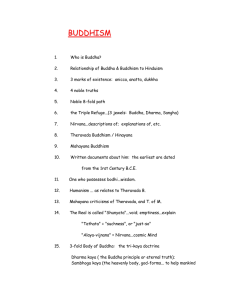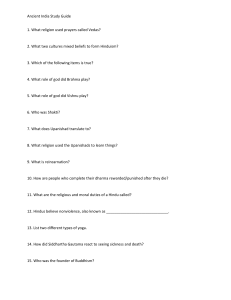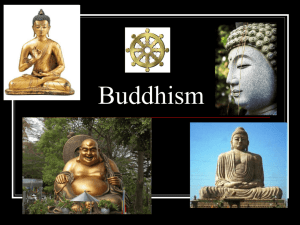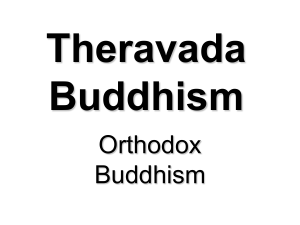Suong Nguyen HUN192.1383 April 22, 2007
advertisement
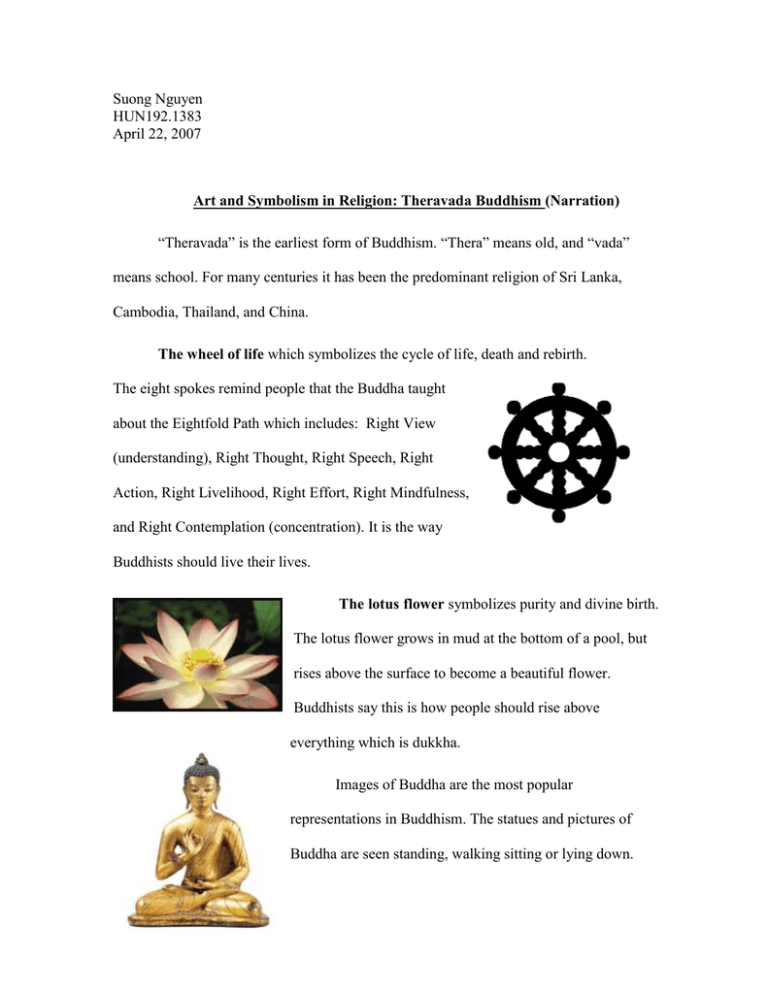
Suong Nguyen HUN192.1383 April 22, 2007 Art and Symbolism in Religion: Theravada Buddhism (Narration) “Theravada” is the earliest form of Buddhism. “Thera” means old, and “vada” means school. For many centuries it has been the predominant religion of Sri Lanka, Cambodia, Thailand, and China. The wheel of life which symbolizes the cycle of life, death and rebirth. The eight spokes remind people that the Buddha taught about the Eightfold Path which includes: Right View (understanding), Right Thought, Right Speech, Right Action, Right Livelihood, Right Effort, Right Mindfulness, and Right Contemplation (concentration). It is the way Buddhists should live their lives. The lotus flower symbolizes purity and divine birth. The lotus flower grows in mud at the bottom of a pool, but rises above the surface to become a beautiful flower. Buddhists say this is how people should rise above everything which is dukkha. Images of Buddha are the most popular representations in Buddhism. The statues and pictures of Buddha are seen standing, walking sitting or lying down. The most common type of image shows the Buddha in a lotus position during meditation, which represents both the importance of meditation in his life and the moment of his Enlightenment. His eyes are closed, the soles of his feet visible, and his hands rest in his lap. Statues of Buddha include lots of symbols. There are 32 symbols in Buddhism which show that the Buddha was a special person. Any of these symbols can be used on statues. For example, the Buddha is often shown with a bump on the top of his head. This is a symbol that he had special talents. He is often seen with a round mark on his forehead, which is his third eye. This is a symbol to show that he could see things ordinary people cannot. He may be shown with curled hair, which is a symbol that he was a very holy man. He has long ears, which is a symbol that he came from a noble family, and also that he could hear things that other people could not. What Buddhism has given to the world is not only a profound analysis, and a practical solution for the problem of human suffering, but also a rich legacy to the world of art and architecture. Works Cited Bullitt, John. “What is Theravada Buddhism?” Access to Insight. <http://www.accesstoinsight.org/lib/authors/bullitt/theravada.html> “Buddhist Art.” Wikipedia. < http://en.wikipedia.org/wiki/Images_of_the_Buddha> “Buddhist Arts and Architecture.” BuddhaNet <http://www.buddhanet.net/budart.htm> “Buddhism.” Religion for school. < http://www.worldfaiths.com/Buddhism/buddhism.htm> “Evolution of the Buddha Image.” Exotic India. <http://www.exoticindiaart.com/article/lordbuddha> “The Buddha Image.” Region Facts <http://www.religionfacts.com/buddhism/things/buddha_image.htm> “The Theravada Buddhism.” Religious Tolerance. <http://www.religioustolerance.org/buddther.htm>




